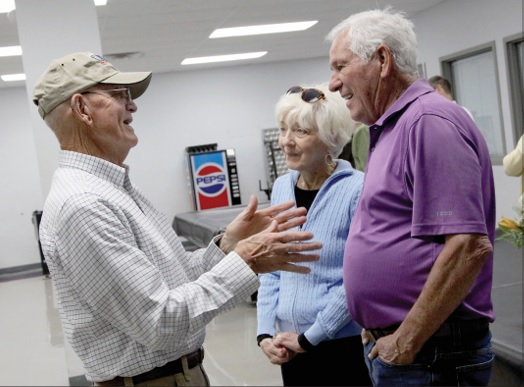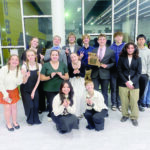The Backstory: Skip White — The downing of Flight 11
Continental Airlines Flight 11 didn’t make it to Kansas City the night of May 22, 1962.
Just 19 minutes away from its scheduled 9:36 p.m. intermediate stop on a flight from Chicago to Los Angeles, the plane, a Boeing 707, disintegrated in mid-air. The plane’s 37 passengers, eight crew members and pieces of the airliner rained down on pastures in Iowa and Missouri. Debris from the crash, it is said, was found as far as 120 miles from the crash site.
“I was 12 years old when the crash happened,” said Skip White, who grew up in Unionville, Mo., located eight miles south of the Iowa line in Putnam County.
White, now the owner and director of White Funeral Home and Crematory in Cassville said he doesn’t recall hearing the noise from the crash.
“The night had been stormy, and a lot of people who did hear the crash just chalked it up to more thunder,” he said.
The plane came apart at an altitude of 36,800 feet, it was later determined. A 38-foot portion of the tail section broke away and landed in Iowa; the main body of the plane, the fuselage — containing passengers and crew members — impacted the ground in Missouri, a mile south of the Iowa line.
After an evening out, two couples from Centerville, Iowa, were returning home from Unionville when they encountered wreckage from the crash in the highway. They immediately reported it to law enforcement personnel. From that point, word of the crash spread quickly.
Pursuant to a request from Continental Airlines, who had lost Flight 11 from radar at 9:17 p.m. the previous night, the FBI’s Disaster Squad was dispatched to Unionville the following morning to investigate the presumptive accident scene. They were assisted by members of the Civil Aeronautics Board.
“Mark Felt, later the ‘Deep Throat’ informant in the Watergate scandal, headed up the FBI investigation,” White said.
Bad weather was initially blamed for the crash until shrapnel was later found in the pilot’s body. Then, the investigation took a grimmer turn.
After explosives residue was discovered on the body of 34-year-old disgruntled businessman Thomas Doty, of Merriam, investigators pieced together the picture of the nation’s first downing of a commercial airliner by a bomb. Doty, it was learned, had stocked up on dynamite and life insurance prior to boarding the flight. A trip to the lavatory with his dynamite-laden briefcase resulted in the destruction of Flight 11 at 9:17 p.m.
Spectators and curiosity-seekers hindered the FBI’s investigation, so extra hands were called in to secure the crash site.
“I’m not sure how much help I could possibly have been since nobody listens to a 12-year-old,” Skip White said. “But, my Boy Scout troop and the Unionville High School football team were brought to the site to help keep people away from the wreckage.”
White said it was the first time he’d been exposed to mass casualties.
“I wasn’t up close to the crash area, just on the fringe,” White said. “In fact, I’m not sure what business a 12-year-old had in being there at all.”
White said, though, that the experience probably played a part in his future career choice.
“I wasn’t afraid or traumatized by the sight of dead bodies,” he said. “I was just interested, in some sort of gruesome way.”
White already had a part-time job as the mower of grass and the shoveler of snow at the Comstock Funeral Home in Unionville, so, after the accident, being allowed into the makeshift morgue set up in a vacant building on Unionville’s Main Street seemed reasonable.
Sixty-one years later, White recalls something unusual about the plane crash.
“Of the 45 deceased passengers and crew members, the bodies were, for the most part, intact,” he said. “They were able to embalm all but two of them, and they were able to identify those same bodies by their fingerprints.
“The pilot and co-pilot were upright in their seats, and their uniforms were still clean.”
According to reports, the bodies of the remaining crew members and passengers weren’t as pristine.
One passenger survived the impact, but died 90 minutes later at a local hospital. The body of a missing flight attendant was discovered several days later by high school football players who were part of the search team.
A black granite memorial, dedicated in 2010, now stands on the courthouse lawn on the Unionville Square, bearing a brief description of the air tragedy, along with the names of deceased passengers and crew members.
Even without the monument, Skip White won’t forget the downing of Flight 11.
“Everybody [from there] remembers it,” he said.
Publisher’s note: Some information for this story was sourced from: “Fifty years ago this week, Continental Flight 11 fell out of the sky over Unionville” by The Pitch, and “The crash of Flight 11” by Missouri Life. “The Backstory” is a recurring feature aimed at delving deeper into local residents’ histories.




